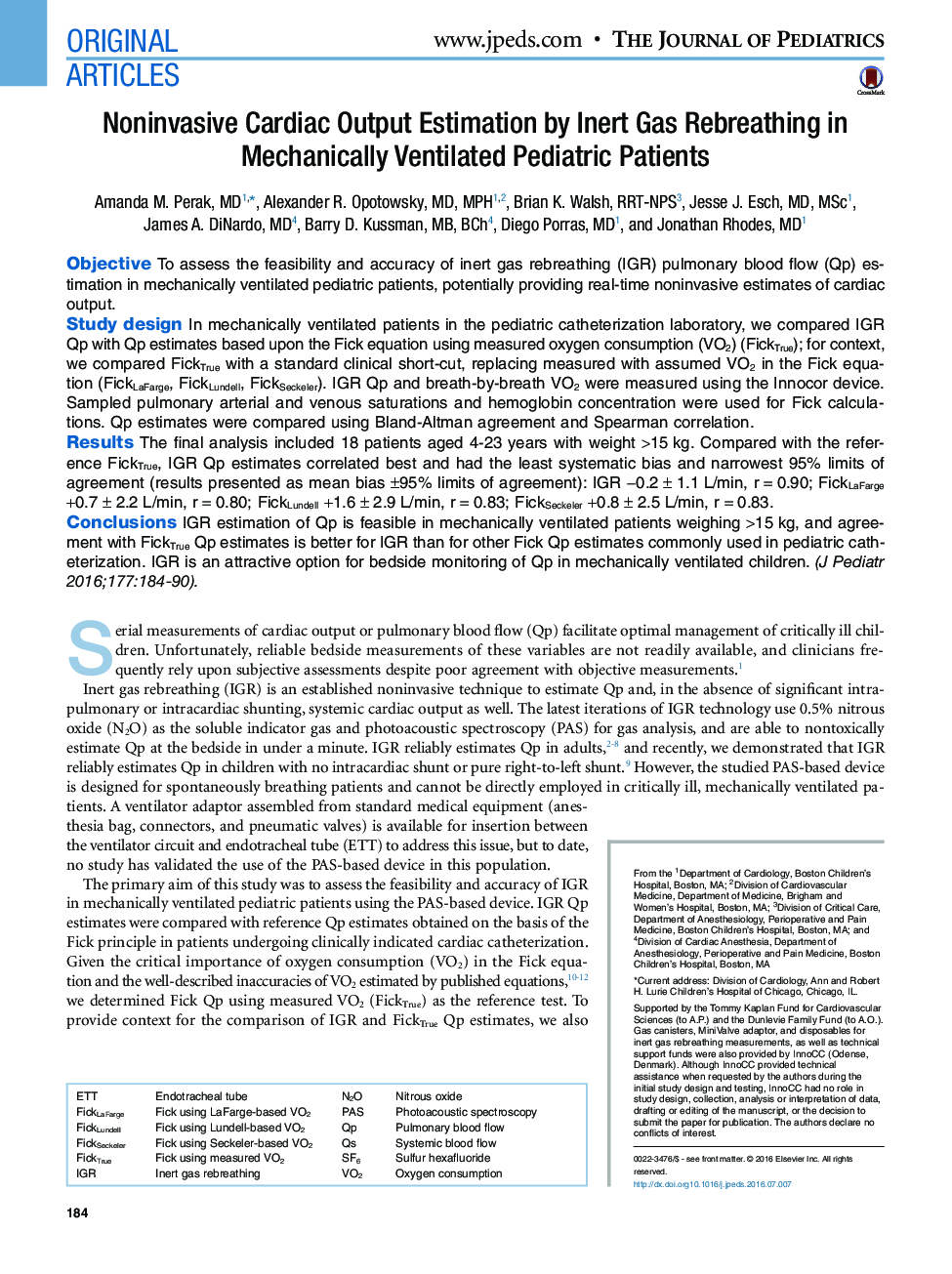| Article ID | Journal | Published Year | Pages | File Type |
|---|---|---|---|---|
| 6218717 | The Journal of Pediatrics | 2016 | 10 Pages |
ObjectiveTo assess the feasibility and accuracy of inert gas rebreathing (IGR) pulmonary blood flow (Qp) estimation in mechanically ventilated pediatric patients, potentially providing real-time noninvasive estimates of cardiac output.Study designIn mechanically ventilated patients in the pediatric catheterization laboratory, we compared IGR Qp with Qp estimates based upon the Fick equation using measured oxygen consumption (VO2) (FickTrue); for context, we compared FickTrue with a standard clinical short-cut, replacing measured with assumed VO2 in the Fick equation (FickLaFarge, FickLundell, FickSeckeler). IGR Qp and breath-by-breath VO2 were measured using the Innocor device. Sampled pulmonary arterial and venous saturations and hemoglobin concentration were used for Fick calculations. Qp estimates were compared using Bland-Altman agreement and Spearman correlation.ResultsThe final analysis included 18 patients aged 4-23 years with weight >15âkg. Compared with the reference FickTrue, IGR Qp estimates correlated best and had the least systematic bias and narrowest 95% limits of agreement (results presented as mean bias ±95% limits of agreement): IGR â0.2â±â1.1âL/min, râ=â0.90; FickLaFarge +0.7â±â2.2âL/min, râ=â0.80; FickLundell +1.6â±â2.9âL/min, râ=â0.83; FickSeckeler +0.8â±â2.5âL/min, râ=â0.83.ConclusionsIGR estimation of Qp is feasible in mechanically ventilated patients weighing >15âkg, and agreement with FickTrue Qp estimates is better for IGR than for other Fick Qp estimates commonly used in pediatric catheterization. IGR is an attractive option for bedside monitoring of Qp in mechanically ventilated children.
